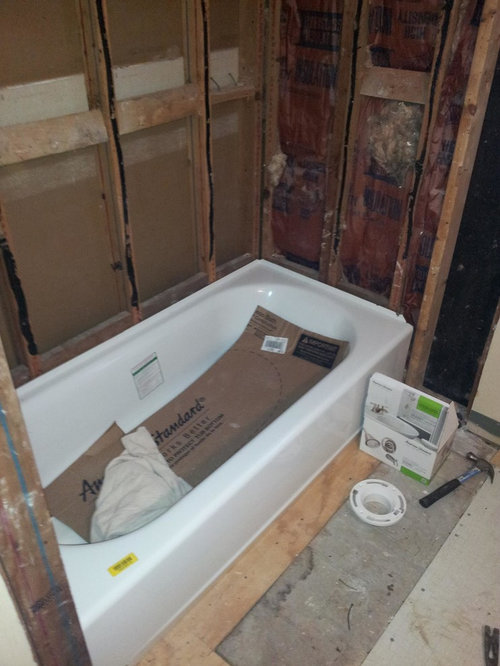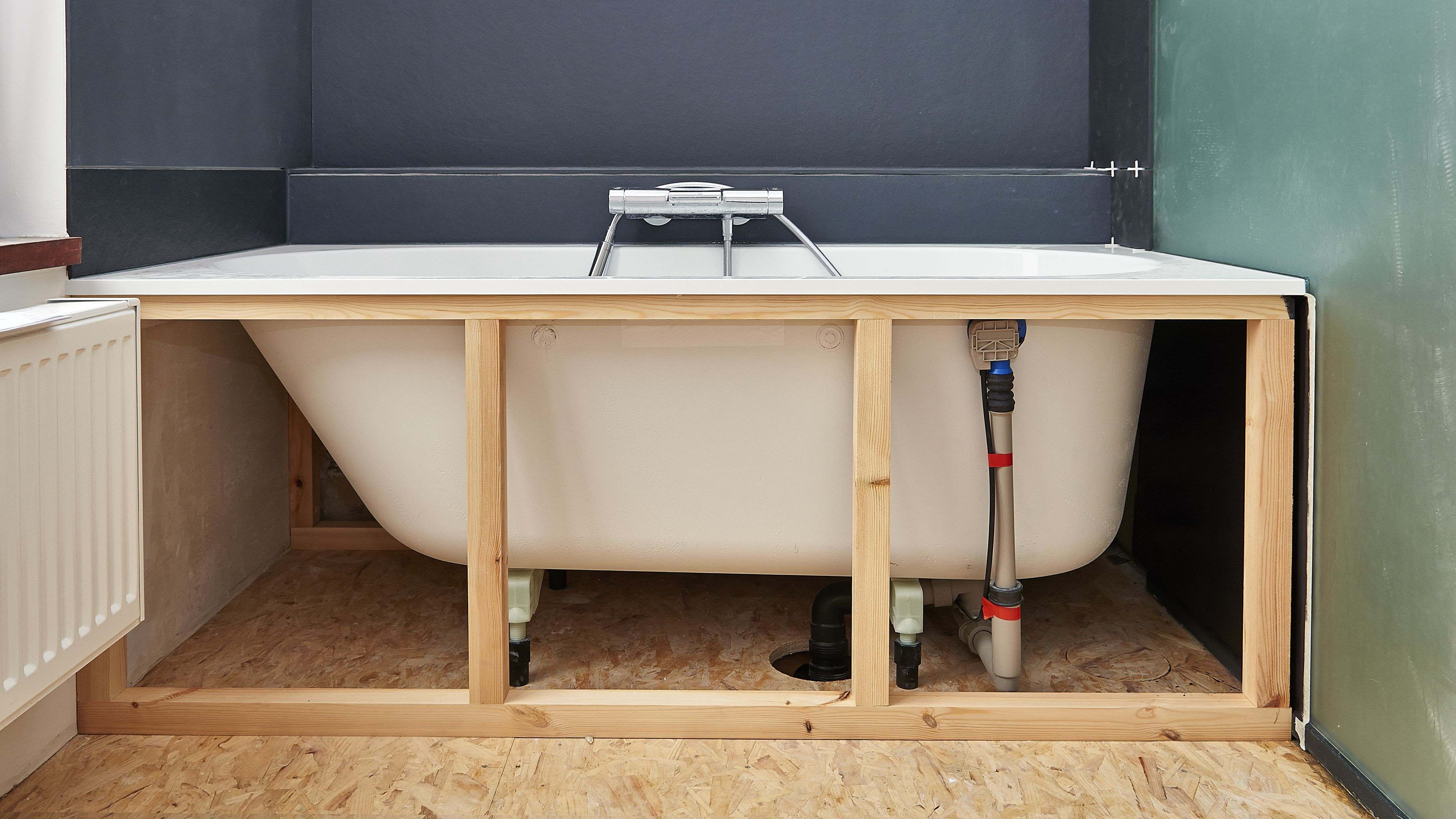Getting Familiar with Plumbing: Your Starting Point for When Installing a Bathtub
Getting Familiar with Plumbing: Your Starting Point for When Installing a Bathtub
Blog Article
How do you really feel in regards to How to Install a Bathtub: Install an Acrylic Tub and Tub Surround?

Installing a bath tub isn't specifically brain surgery, but it does need strong plumbing, woodworking, as well as often, tiling abilities. Replacing an old bathtub with a new one is additionally a moderately hard job. If the old bathtub is easily easily accessible, the project can relocate rapidly; if you have to open up a wall surface to remove the old tub as well as place the new tub, the task is much harder. In either case, the job is within a house handyman's skills, although you will certainly need a helper to leave the old tub and set in the brand-new one. Make certain you have actually qualified on your own for the job and fit attempting it. Rather than hiring a service provider to take control of a halfway-completed task, it is much better to think about utilizing one prior to you begin. Possibilities are you may need an expert plumber to make tube links.
This write-up will help you set up a brand-new bath tub in your shower room if you have actually currently acquired a brand-new bathtub and don't require to change the plan of your previous supply of water pipelines.
Your tools and also product checklist must comprise the following:
Removing Old Touches
If you need to replace old faucets with new ones as a part of your installation, after that the first thing you should do is disconnect the water supply. After doing so, activate the taps to drain pipes any water remaining in the system. The procedure of removing the existing faucets can be rather problematic because of the restricted gain access to that is frequently the situation.
Utilize a basin wrench (crowsfoot spanner) or a faucet device to reverse the nut that connects the supply pipelines to the taps. Have a cloth prepared for the remaining water that will certainly come from the pipes. As soon as the supply pipes have actually been eliminated, utilize the exact same device to loosen the nut that holds the taps onto the bath/basin. You will certainly need to stop the solitary taps from turning during this procedure. As soon as the faucets have actually been eliminated, the holes in the bath/basin will need to be cleaned up of any old sealing substance.
Prior to carrying on to fit the brand-new faucets, contrast the pipe connections on the old taps to the new faucets. If the old taps are longer than the new faucets, then a shank adapter is needed for the new faucets to fit.
Suitable New Touches
If the tails of the new taps are plastic, then you will certainly need a plastic port to stop damages to the thread. One end of the adapter fits on the plastic tail of the faucet and the various other end supplies a connection to the existent supply pipes.
If you require to fit a monobloc, then you will certainly require decreasing couplers, which connects the 10mm pipeline of the monobloc to the standard 15mm supply pipe.
Next, position the faucet in the placing hole in the bath/basin making certain that the washing machines remain in place between the tap and also the sink. Secure the tap in position with the supplier given backnut. When the faucet is securely in position, the supply pipelines can be attached to the tails of the faucets. The taps can either be linked by utilizing corrugated copper piping or with typical faucet connectors. The previous type needs to be linked to the faucet finishes first, tightening up just by hand. The supply pipes can later on be linked to the various other end. Tighten up both ends with a spanner after both ends have been linked.
Installing the Bath tub
Utilizing the two wooden boards under its feet, put the bath tub in the needed placement. The wood boards are practical in equally spreading out the weight of the bathtub over the location of the boards rather than concentrating all the weight onto four little points.
The next goal is to ensure that the bath tub is leveled all round. This can be accomplished by inspecting the spirit level and adjusting the feet on the bath tub up until the spirit level reads level.
To set up taps, fit all-time low of the outermost versatile tap connector to the appropriate supply pipe by making a compression join; after that do the very same for the various other faucet.
Switch on the water supply and inspect all joints and also new pipework for leaks and tighten them if essential. Fill up the bath tub and also examine the overflow outlet and also the regular electrical outlet for leakages.
Finally, take care of the bath paneling as explained in the producer's user's manual. Tiling and also securing around the tub needs to wait up until the bath tub has actually been utilized at the very least when as this will settle it right into its last position.
Planning for the Setup
To start with, the supporting structure supplied with the bath should be fitted (if needed) according to the supplier's instructions. Next off, fit the faucets or mixer to the bath tub. When fitting the tap block, it is very important to ensure that if the tap includes a plastic washing machine, it is fitted between the bath and also the faucets. On a plastic bath, it is likewise reasonable to fit a supporting plate under the taps unit to avoid stress on the tub.
Fit the flexible tap adapters to the bottom of the two faucets making use of 2 nuts as well as olives (occasionally supplied with the bathtub). Fit the plug-hole electrical outlet by smearing mastic filler round the sink outlet opening, and then pass the electrical outlet with the hole in the bathroom. Utilize the nut supplied by the maker to fit the plug-hole. Analyze the plug-hole electrical outlet for an inlet on the side for the overflow pipe.
Next off, fit completion of the adaptable overflow pipeline to the overflow electrical outlet. Afterwards, screw the pipe to the overflow face which must be fitted inside the bath. Ensure you utilize all of the supplied washers.
Connect the trap to the bottom of the waste electrical outlet on the bath tub by winding the thread of the waste electrical outlet with silicone mastic or PTFE tape, and screw on the trap to the electrical outlet. Attach the bottom of the overflow tube in a similar manner.The bath need to currently prepare to be fitted in its final placement.
Tiling Around the Tub
In the area where the bathroom satisfies the tile, it is required to secure the joins with a silicone rubber caulking. This is important as the fitting can relocate enough to break a rigid seal, triggering the water to pass through the wall in between the bath as well as the tiling, leading to issues with wetness as well as possible leaks to the ceiling listed below.
You can pick from a range of coloured sealants to blend in your components as well as installations. They are sold in tubes and also cartridges, and can securing gaps up to a size of 3mm (1/8 inch). If you have a larger space to load, you can load it with spins of soaked newspaper or soft rope. Remember to constantly fill up the tub with water before sealing, to permit the motion experienced when the bathtub remains in use. The sealer can crack relatively early if you do not consider this movement prior to sealing.
Alternatively, ceramic coving or quadrant floor tiles can be used to edge the bathroom or shower tray. Plastic strips of coving, which are easy to use as well as reduce to size, are likewise easily offered on the marketplace. It is a good idea to fit the tiles making use of water-resistant or water-proof adhesive as well as cement.
Bathtub Installation
How Important Is A Bathtub To Your Home?
High-quality baths, showers, and other bathroom updates are necessary when considering a smart investment in your home. It’s a room that you go to every day and one that is constantly being used by guests.The bathroom is one of the top trafficked rooms in a home and also one of the most valuable in terms of home resale.
Install Piping Before Tub
You will be using your existing drain and waste vent system, but pipes required include the hot and cold water supply lines and a pipe leading to a shower head. A mixing valve and shower head are also needed. Air chambers may be required.
Position the Tub
Lower the tub into place so that the continuous flange fits against the wall studs and rests on 1’x4' or 2’x4' supports. Anchor the tub to the enclosure with nails or screws inserted through the flanges into the studs.
NOTE: Remember, bathtubs and shower stalls may require support framing. A bathtub filled with water is extremely heavy, so check building codes and framing support before installing the tub.
Assemble Drain Connections
Assemble the bathtub drain connections by connecting the tub overflow with the tub drain above the trap, not beyond it. The trap will have a compression fitting that screws over the arm of the overflow assembly.
Place a Pipe For the Shower Head
First, locate a brass female threaded winged fitting and attach it to a framing support via a screw or a nail. Then run a pipe up the wall for the shower head. Sweat or solder the other side of the brass fitting to the top of the pipe.
Attaching Hot and Cold Water Lines
Attach your water lines for both hot and cold by sweating these directly into the hot and cold ports of the mixing valve. The mixing valve will be how water enters the tub’s system, not by the pipes themselves.
Install the Spout
Extend a piece of 1/2 inch pipe, or whichever length is specified in the manufacturer’s instructions, for the tub spout. Sweat on a male threaded fitting at the end of the pipe or use a brass nipple of the proper length and a 1/2 inch cap.
NOTE: At this point you should have your rough-in plumbing work inspected before proceeding further.
Check For Leaks
Restore the water pressure and check the drain connection and the supply pipes for any sign of leaking.
estore the Bathroom Wall
Replace the wall with moisture-resistant drywall as a base for your wall covering. Seal the joints between the wall and your new tub with silicone caulk as protection against water seepage.
https://www.berkeys.com/2016/12/02/bathtub-installation-dallas/

Hopefully you liked our part on How to Install a Bathtub Yourself. Many thanks for finding the time to browse our blog. Make sure you set aside a second to distribute this blog posting if you enjoyed reading it. Thanks a lot for taking the time to read it.
Avoid further plumbing damage; call. Report this page